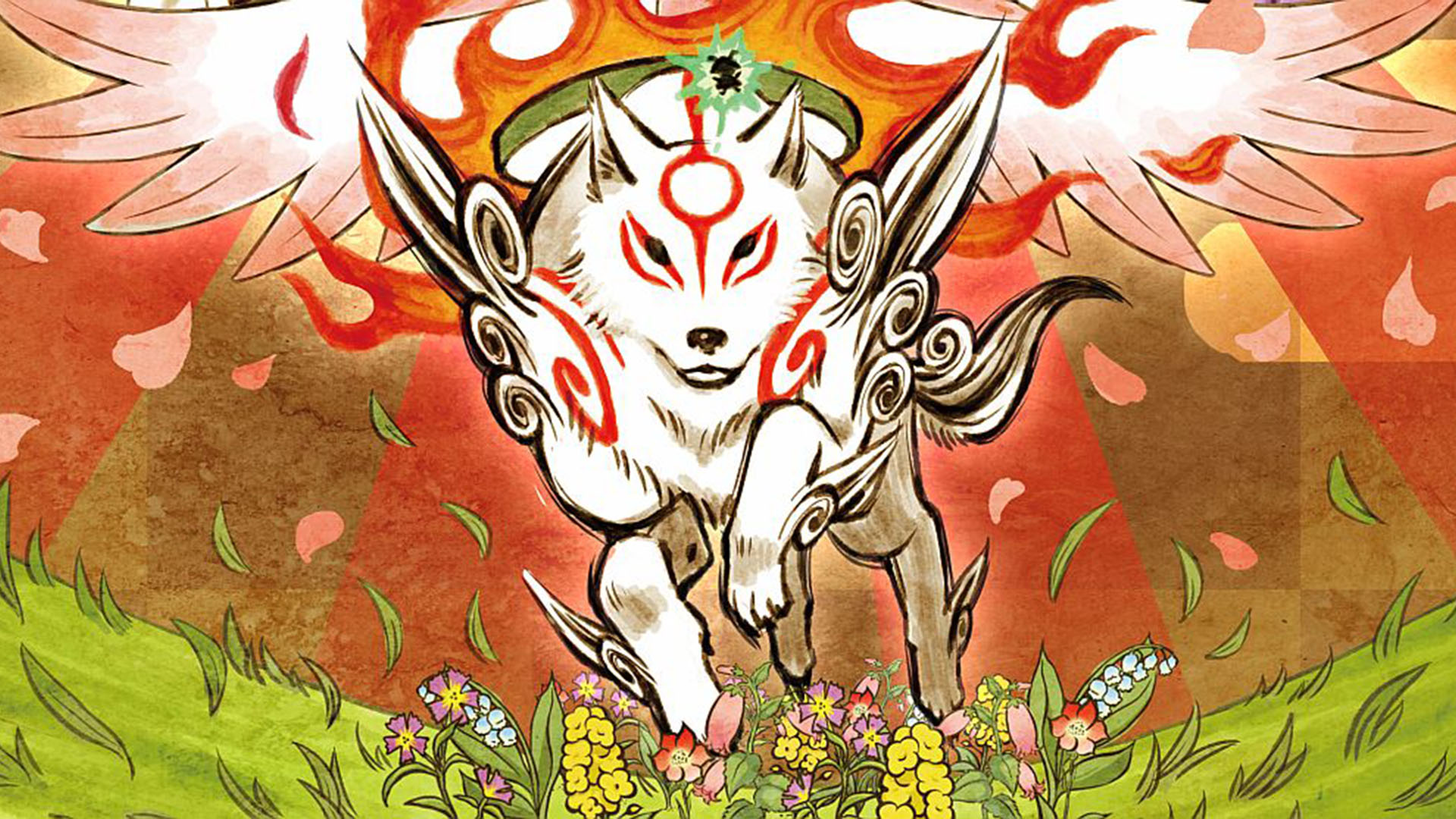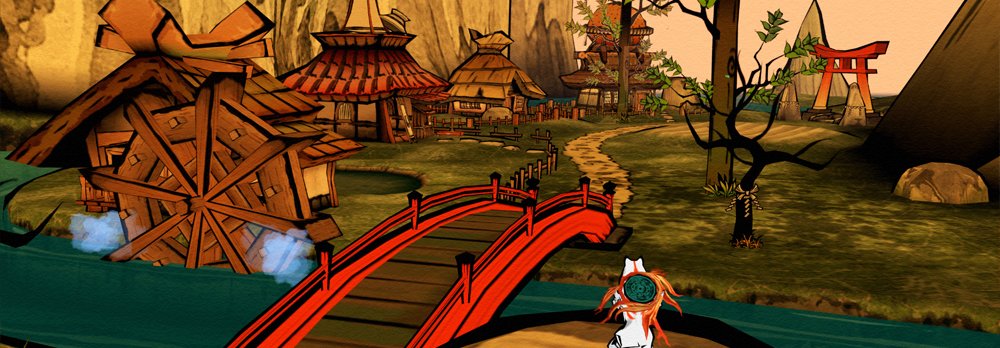A picture paints a thousand words
Hideki Kamiya is a strange and interesting man. When he’s not busy being the vice president of Platinum Games or randomly blocking people on Twitter, he’s at the helm of some of the best action-adventure games in the industry. Prior to his time at Platinum, he worked at Capcom on the Resident Evil games, before being made director of a planned spin-off series now known as Devil May Cry.
This is important, because in 2004 when Clover Studio was founded and the staff started on Viewtiful Joe 2, they also began work on Okami — with Kamiya directing it. Originally, Okami was conceived as a simple minute-long tech demo of a wolf running while leaving a trail of flowers behind it. Capcom showed interest in making this a full-fledged game, with the premise built around “depicting nature.”
Once development began though, the premise of simply “depicting nature” was too boring for Kamiya and they instead focused on making Okami an action-adventure game in the same vein as Zelda. The actual task however of replicating the Zelda formula is a huge endeavor in and of itself. But, not only did Kamiya and Clover Studio completely nail that formula, in my opinion, they created a game that rivals — if not exceeds — any Zelda game prior to it and one that would forever cement Kamiya’s status in the industry like no other before it.

Okami HD (PS4, Xbox One, PC [Reviewed], PS3)
Developer: Clover Studio, HexaDrive
Publisher: Capcom
Release: December 12, 2017
MSRP: $19.99
Set in the land of Nippon, with a heavy emphasis on Japanese folklore, Okami tells the tale of a white wolf deity named Amaterasu and her little bug artist companion Issun. To keep things brief, an eight-headed demon has been awoken after 100 years and (of course) has spread darkness and bad vibes across the land. So, it’s up to Amaterasu to gather all the celestial brush techniques to become powerful enough to stop it and save the land.
If you can get past the painfully long 20-minute introduction, you’re gonna be in for one hell of an adventure spanning a little over 30 hours with the most memorable cast of characters I’ve had the joy of encountering in recent memory. That goes for everyone from Susano, who believes he’s the greatest warrior in the land and constantly attempts to save the day (when in reality Amaterasu does all the work), to even minor characters you might come across, such as a possessed old woman with knives who wants to chop you up and turn you into wolf-stew.
Okami‘s quirky cast of characters alone kept me progressing, simply because I was interested in who I’d meet next. Overall, the story does have some pacing issues, especially with its stop-start momentum, constantly leaving you guessing if the game is actually over or not. But, easily the most redeeming (and obvious) quality of Okami is simply how gorgeous this game looks, thanks to its uniquely cel-shaded ukiyo-e inspired art style.
If you want a more detailed breakdown of the PC-specific release of Okami HD, be sure to check out my review-in-progress. In short though: this release now supports 4K resolutions, but is still capped at 30 FPS due to game-specific things such as collision detection and animation speeds being broken at higher frame rates. It’s disappointing that this version still doesn’t support 60 FPS, however, I never felt like I was hindered in anyway due to the frame rate.
Originally, Okami was intended to be rendered in a photo-realistic 3D style. However, due to the hardware limitations of the PlayStation 2 at the time, this concept was scrapped in favor of the aforementioned ukiyo-e inspired cel-shaded art style. This eye-catching aesthetic only benefited Okami in the long run, as it still easily holds the test of time, even today, thanks to its unique art direction — now only bolstered with HD resolutions.
Ironically, if they went with the photo-realistic route as originally intended, Okami would have immediately looked dated within half a year thanks to the PlayStation 3 set to release that same year.

It’s not only the aesthetic of Okami that holds up so well, but also the gameplay thanks to the unique Celestial Brush mechanics that make up the core experience and backbone of Amaterasu’s abilities.
Throughout your adventure, Amaterasu will unlock various brush techniques that range from restoring objects in the environment for puzzle-solving, to combat abilities, such as cutting away at opponents or creating bombs to use on enemies or uncover new areas. The Celestial Brush also helps with traversal, allowing you to create lily pads to get across water or even change the time of day.
As you progress, you’ll unlock most of these techniques in various dungeons that you’ll then use on accompanying bosses, which is obviously where a lot of the Zelda comparisons come in. But, where Zelda has Link utilize various tools he finds on his journey, Okami has you instead remembering different brush strokes with the Celestial Brush — which feels all the more satisfying and unique with the PlayStation Move controls on PS4 and even more so with the mouse on PC.

It’s a brilliant mechanic that literally draws the line on where it differentiates itself from Zelda and other action-adventure games in general. Throw all this in with a gorgeous art style, a classically intertwined Japanese soundtrack, and memorable characters and writing, and you have one of the best games from the PlayStation 2 still going strong over a decade and two console generations later.
Aside from a few minor gripes and this re-release of the game not offering much else from the 2012 PlayStation 3 re-release (other than higher resolutions and the return of loading screen mini-games), Okami HD is still a near-perfect game. If you haven’t already beaten or played it yet, then now is a better time than ever before…
…Unless you’re waiting for a Nintendo Switch port.
[This review is based on a retail build of the game provided by the publisher.]








